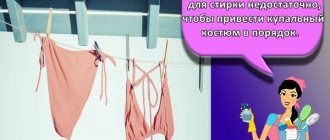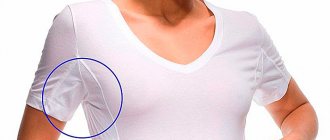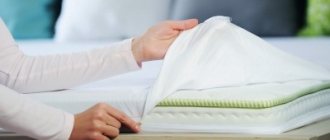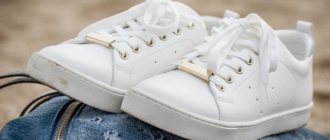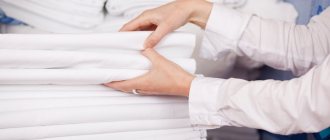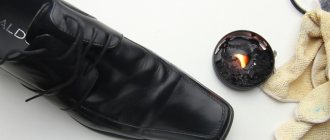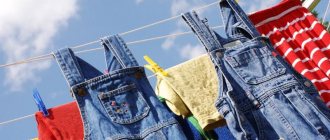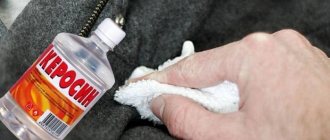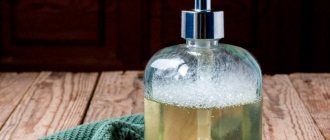Share
Tweet
+1
Pin
Usually we just don't want to fix the situation when once clean pillowcases turn into rags with drops of grease and stains. Many people simply throw them away or throw away half a rag, thinking that the problem cannot be solved. But there are many tips that you can use to help you wash your pillowcases. Many people wonder about washing greasy and greasy pillowcases. It is not possible to wash with ordinary powder to a good result in all cases. In addition to poor bed linen care, there are many other factors that contribute to deterioration. With frequent contact with dirty hair, the pillowcases deteriorate and have to be replaced with new ones.
Soda
Baking soda is a natural deodorizing cleaner.
- What it shows up: odor and yellow stains from sweat.
- Suitable for fabrics: light-colored.
- What you need: ½ cup cool water 4 tablespoons baking soda toothbrush.
Dissolve baking soda in water to form a thick paste. Add more soda if necessary. Rub the paste into the stains and leave for several hours until dry.
Then scrub the stains well with a toothbrush to remove the baking soda and rinse the item in cool water.
5 cooking lifehacks with baking soda →
If the stain is old
At the first stage of removing sweat stains, the dirty item must be soaked in soapy water for an hour. An old sweat stain is much more difficult to remove than a fresh one. Therefore, when you come home from work or training, where you had to sweat a lot, you need to immediately wash your clothes.
If this was not possible, and the dirt is firmly embedded in the fibers of the fabric, proceed as follows:
You shouldn’t deprive yourself of your favorite clothes if yellow stains from sweat appear on them. You can always choose an effective product to remove dirty stains under your arms.
Stains on a pillowcase and how to remove them
- Tea and coffee will help remove the mixture of ammonia, glycerin and water.
- A fresh red wine stain can be easily washed off under running hot water; white wine and champagne can be washed off with a solution of a teaspoon of baking soda and liquid soap in a glass of water.
- Fruit juice will remove hydrogen peroxide with water in a ratio of 1:12.
- Foundation, mascara, eyeliner will require the use of acetone or gasoline, lipstick - pharmaceutical borax.
- Chocolate stains can be easily removed if you wash your clothes in a solution - take a teaspoon of salt per 1 liter of water.
Regardless of the origin of the stain, it is recommended to remove it immediately, without waiting for it to dry.
Lemon juice
Lemon juice can only remove fresh stains. This method is not suitable for the elderly.
- What it shows up: white traces of deodorant and yellow stains from sweat.
- Suitable for fabrics: light-colored. Can be used for dark or multi-colored ones if you are sure they are painted with permanent paint.
- What you need: 1 lemon.
Squeeze the juice of ½ lemon onto each stain. The spots should be completely covered with juice.
Leave for 2–10 minutes depending on the degree of contamination. Then rinse your clothes in cool water.
30 unusual ways to use lemon →
How to remove yellow stains from dark fabric
The solvent is an indispensable tool in the fight against stains on colored natural fabrics. In cases where yellow and white sweat stains appear on dark or colored clothing, you can use oxalic acid, white spirit or denatured alcohol for cleaning. When working, special care must be taken, since if the color of the fabric is fragile, you can ruin the design or leave a persistent whitish stain that cannot be removed by any means in the future.
Oxalic acid
To remove sweat stains, dilute half a teaspoon of oxalic acid in 50 ml of water and, after soaking a napkin in the resulting solution, rub the stained area. After this, you need to wait 1 hour until the acid penetrates the fibers of the fabric, and wash the product in the usual way.
White Spirit
Gasoline solvent is an indispensable tool in the fight against sweat and grease stains on colored natural fabrics. This product, in combination with ammonia, can clean clothes made of silk and wool, the main thing is to keep the proportions correctly. To prepare the cleaning composition, take 4 parts of white spirit and 2 parts of ammonia, mix and carefully apply to the stain. After 2 hours, the product can be rinsed in warm water and hung to dry.
Denatured alcohol
Yellow stains from sweat that appear on a colorful blouse can be eliminated using denatured alcohol and ammonia, mixing the components in equal quantities. The treated item is kept for 40 minutes for better penetration of the composition into the fabric, after which it is washed.
How to wash heavily soiled bedding with yellow stains
Add to the special compartment of the washing machine:
- 1.5 dose of washing powder;
- dishwashing detergent - at least 3 tablespoons;
- a quarter cup of borax - dilute with water and pour into the drum;
- Pour 1/3 cup of vinegar into the conditioner compartment; if there is no such compartment, you can simply add vinegar while rinsing the clothes.
Next, you need to set the washing machine to the highest temperature and select a soaking mode for at least 30 minutes. Afterwards, the washing mode starts for up to 2 hours.
Good old ways: boiling and soaking in white
For a long time it was believed that the best way to return dazzling cleanliness to bed linen was boiling. This method is suitable for cotton and linen sheets and duvet covers. It is still used as an alternative to harsh chemical bleaches. Boiling will help if you need to wash bed linen from yellowness. The downside of this method is that you have to spend time.
You can do without boiling. The second method known to all housewives is soaking in white. Bleach contains chlorine, so be prepared to wash it yourself. You cannot add such products to the machine.
What is better - boiling or soaking in white? Boiling does the job more effectively, but requires more effort. It is easier to soak the laundry, but it is not a fact that after this it will be snow-white and without holes. You can decide for yourself which method is better only by trying both.
Let's boil
What you will need:
- large capacity (necessarily enameled/galvanized);
- white towel or cloth;
- laundry powder/soap;
- ammonia.
Instructions
- Line the bottom of the selected container with a white cloth.
- Make a soap solution. If there are “blots” on the sheet, wash them with laundry soap.
- Send the laundry to the boiler. Try to straighten it out as much as possible.
- Pour enough soap solution to cover the laundry.
- Add a tablespoon of ammonia. You can skip this step if there is no dirt on the sheet.
- Boil for about an hour. Be sure to use a wooden stick for stirring.
Boiling not only bleaches, but also helps remove musty odors, for example, if bedding has been stored damp. In difficult cases, you can add a solution of bleach to the “dilution”. After this step, the linen will have to be washed additionally with the addition of essential oils: after chlorine, the sheets will become clean, but will smell bad.
Soaking
What you will need:
- basin;
- white;
- powder/laundry soap.
Instructions
- Prepare a soap solution using powder or laundry soap.
- Add white: for every 3 liters - a tablespoon of the product.
- Soak the bedding for 20 minutes.
- Rinse thoroughly by hand.
Since it is not always possible to bleach things white, soaking is combined with boiling, although after soaking they are boiled for less than half an hour. “Whiteness” can only be used for cotton sheets; other fabrics are afraid of chlorine. For them, it is better to prepare another solution - laundry soap and a couple of drops of ammonia.
Whitening with home remedies
Snow-white things sooner or later acquire a dirty tint. Sometimes it is enough just to boil the product so that it becomes snow-white again. When this is not enough, a variety of homemade recipes and popular folk “stain removers” will come to the aid of housewives to get rid of yellowness on fabric. Let's take a closer look at them.
Baking soda
With the help of sodium bicarbonate, skillful housewives restore the whiteness of even washed bed linen. The fabric is dipped in a solution prepared from 10 tbsp. l. soda, 5 tbsp. l. ammonia and 10 liters of warm water. Sheets and duvet covers should be left in a container with the solution for about 3 hours.
Bed linen must be stirred periodically so that the solution acts evenly on the fibers. In case of heavy contamination, you can increase the “soaking” time by another hour. After all procedures, things must be rinsed to consolidate the result and remove any remaining soda. If bleaching is unsuccessful, it is recommended to repeat all the above procedures again.
For slight yellowing, just add a little baking soda to the powder compartment during normal machine washing.
Hydrogen peroxide
Bedding should first be washed in the usual way. You should rinse your laundry thoroughly to get rid of any remaining powder that can react with peroxide and produce a completely unexpected result.
Then the prepared product is soaked in a solution of water heated to 60°C, peroxide and ammonia. Proportions for solution: 10 l. water, 4 tbsp. l. peroxide, 1 tbsp. l. ammonia.
Mustard
Mustard mixed with water will help restore the whiteness of synthetic underwear. For every 5 l. water, you need to add 400 grams of powdered mustard. The product is placed in the prepared solution and soaked for 10-12 hours. After the specified time, the laundry should be washed in the usual way.
Potassium permangantsovka
A mixture based on potassium permanganate is prepared simply: a glass of pink potassium permanganate solution is mixed with 200 g. washing powder or grated laundry soap. The resulting mixture is diluted with 10 liters. boiled water and used for soaking for 6 hours. Afterwards, the item must be rinsed thoroughly.
Sunflower oil
This product, found in every kitchen, will help remove yellowness from bed linen that even washing powder cannot remove. Pour one cap of oil into 5 liters of boiled water. For a better effect, you can add special powder or crushed laundry soap. Finally, the fabric is thoroughly washed to remove even the smallest traces of the mixture.
Ammonia
Ammonia, hydrogen peroxide and hot water are popular ingredients for making homemade stain remover. It is enough to mix the components and heat them to 70 degrees to get an effective bleach. Proportions: ammonia and peroxide 30 ml each, water – 5 liters. The product must first be washed. The mixture is poured into the laundry for only half an hour, as the solution turns out to be very caustic.
Laundry soap
Laundry soap is an indispensable product in both the kitchen and bathroom. It copes wonderfully with yellowness. Mix the ingredients thoroughly: soap solution - 250 ml, baking soda - 100 g, borax - 125 g. The resulting product is used to eliminate slight yellowing. Linen that has lost its whiteness is soaked in a highly concentrated solution (200 ml per 10 liters of water) for 3 hours, then rinsed to remove any remnants of the prepared product.
Eggshell
Pre-dried and ground shells, the consistency of which should resemble powder, will help get rid of the yellowish tint on laundry. The product is placed in a cotton bag and poured into a drum with laundry.
We told you about several simple methods of traditional whitening. And you already choose the one that you like best.
Cleaning colored items
To remove noticeable stains left by sweat from dyed fabric, it is necessary to exclude substances with bleaching characteristics: acid - oxalic, citric, soda, peroxide.
Table vinegar, ammonia, salt, and laundry soap have a safe effect on colored items. You can choose other effective techniques from your arsenal of home techniques:
- Grind 2 aspirin tablets into powder and stir in 100 ml of slightly warmed water. Impregnate heavily contaminated areas. The treated item should be washed after 3 hours. If the marks remain, repeat the steps, taking less water - 3 tbsp. l.
- Pour 200 ml of water into an enamel mug. Dissolve the salt and add ammonia - 1 tsp. Sweat prints are moistened generously. After 30 minutes, clean them with a brush. This method is recommended for cotton and linen clothing.
- To remove noticeable traces of sweat from wool or viscose, pour ammonia into a glass container - 1 tsp. and add twice the volume of white spirit. Using a sponge, moisten the contaminated area with the resulting mixture. Start washing after 1.5 hours.
- If you need to clean thick textiles with persistent dye, soap a damp sponge generously with laundry soap. Wipe off traces and rinse. Then crystalline oxalic acid is poured into a thin, uniform layer, washing it off after a quarter of an hour.
ARTICLE FOR YOU
How and with what to remove foundation stains from clothes and linen
Vodka works effectively. Moisten a cloth and place it on the stain for two hours.
Cleaning colored items
Tips for people who sweat
In order to still avoid soiling your clothes, you should also take care of yourself.
Be sure to use body deodorants. It is best in solid form - they dry quickly and are guaranteed to prevent profuse sweating. If the deodorant is gel, the armpits must be dried after applying the deodorant.
A good option for those who sweat all over the body are protective body creams and talcs, which are easy to apply and retain moisture in the body.
And of course, it’s not worth mentioning that it’s always necessary to have wet and dry wipes with you just in case.
General recommendations for washing pillowcases
When buying a set of pillowcases, you need to immediately think about future stains and ways to eliminate them. So how to properly wash pillowcases at home to remove all grease stains. How often and what mode should I use? Can it be washed with other bedding and what temperature should the water be? To answer all these questions, read our articles. And then your pillowcases will always smell fresh and shine white.
- When purchasing bed linen, manufacturers often include labels in the package that clearly describe the cleaning methods for this product. They also outline basic recommendations for washing. It is advisable not to throw away the leaves, but to save and use later.
- Buy a special bag for cleaning things. Sometimes white pillowcases are decorated with bright embroideries or prints, which means you need to take care of the color of the pillowcase. This is exactly what the bag will help us with. You can wash without it, but manually.
- This advice also applies to pillowcases with patterns and embroideries. Before washing, they need to be turned inside out for good cleaning. This way the drawing will not fade or lose its shade for a long time. When washing, the pattern will also not rub against the walls of the machine or other things.
- Accumulations of unnecessary debris are often observed in the inner corners of pillows. Dust, lint and crumbs will end up there. Therefore, for complete cleaning, be sure to shake out all pillowcases before starting washing. When washed, this debris can also stain other parts, especially if it is something easily soiled. The washing machine will not clog the filter.
